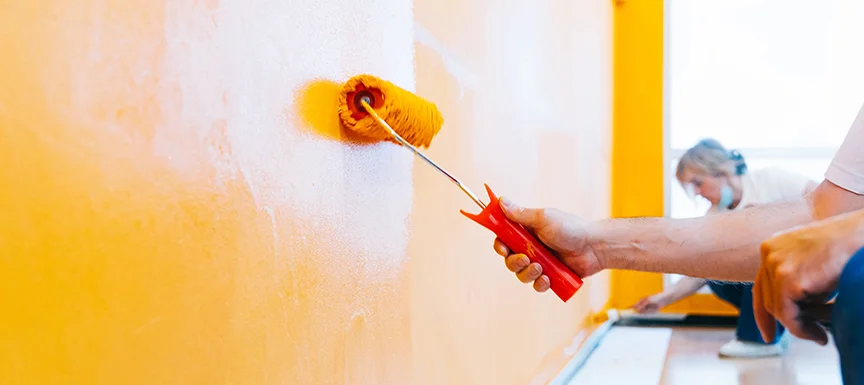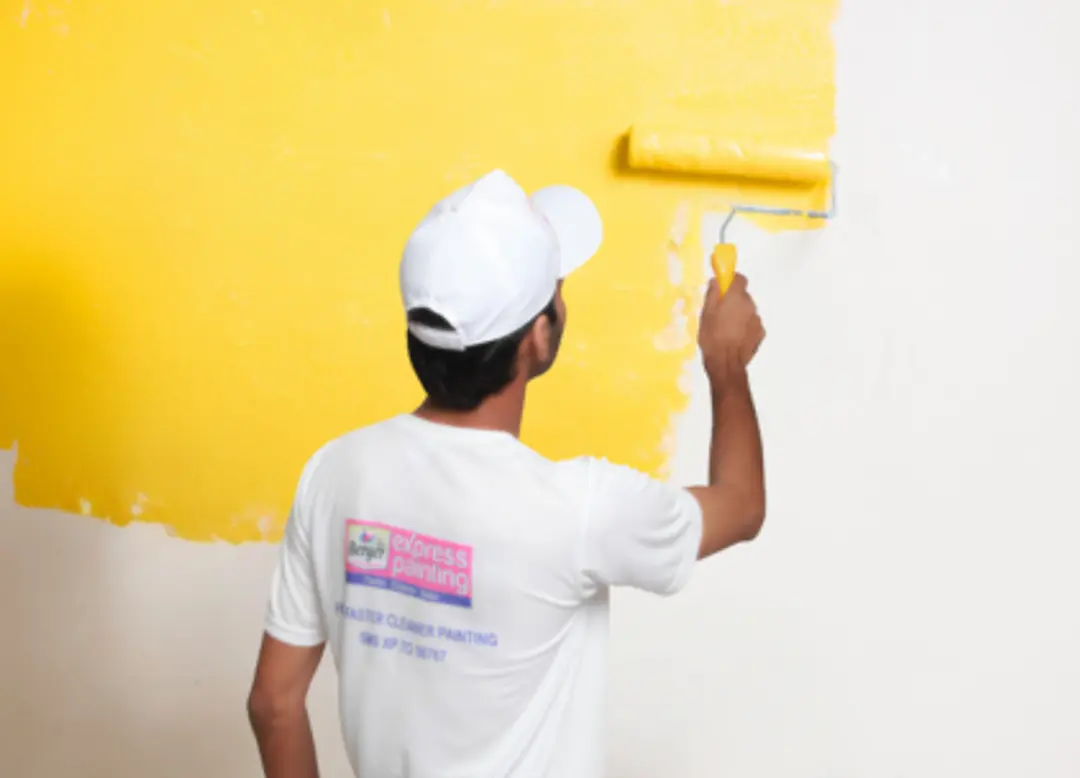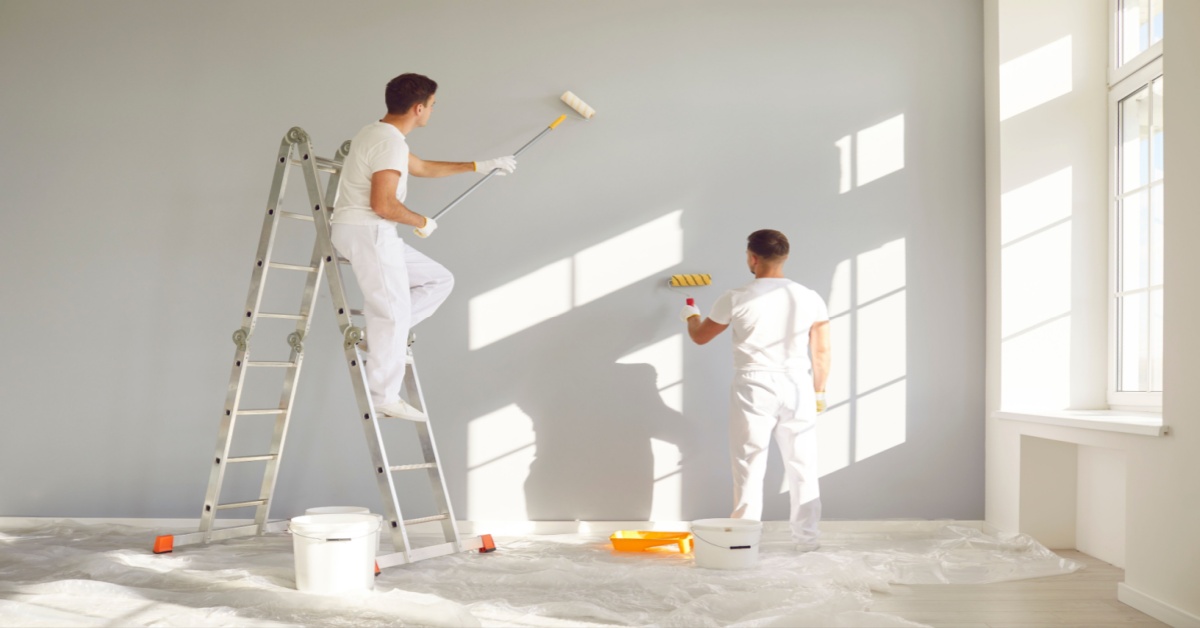Stay Ahead With New Paint Trends: Mixing Techniques for Modern Interiors

The Surge of Color Gradients in Interior Decoration
As designers progressively look for innovative ways to improve areas, the rise of shade slopes in interior decoration has actually amassed considerable attention. This method, identified by the smooth change in between 2 or more shades, enables a dynamic aesthetic impact that can change a regular area into a lively environment. Color gradients can stimulate emotions, influence perceptions of space, and develop focal points, making them a functional selection for different style styles.
The application of slopes expands past wall surfaces; they can be successfully employed in furnishings, fabrics, and accessories. Designers often experiment with varying tones to attain deepness and intrigue, appealing to a variety of aesthetic appeals from minimalist to eclectic. Furthermore, the flexibility of slopes allows their usage in both industrial and property setups, dealing with diverse customers. As fads develop, making use of color slopes represents a shift in the direction of more meaningful and tailored indoor areas, mirroring private preferences and way of livings.
Accepting Ombre Methods for a Dynamic Look
Ombre methods have actually become a captivating selection for those aiming to include deepness and activity to contemporary insides. This slope result changes efficiently from one color to one more, creating an aesthetically striking focal factor in any type of area. Designers appreciate ombre for its adaptability; it can be put on walls, furnishings, or perhaps decorative accents, enabling unique expressions of style.
The strategy works particularly well with soft hues, offering a tranquil ambiance, while strong colors can invigorate a room. Homeowners can trying out different color schemes, selecting contrasting tones for a significant impact or unified tones for a subtle impact. The application of ombre is not limited to a single wall; it can expand across a room, enhancing the understanding of area and light.
As a modern trend, ombre methods cater to diverse tastes, enabling individuals to individualize their insides and welcome creativity in their layout technique. paint shops in corpus christi.
Textured Wall Surfaces: Layering Paint for Deepness and Interest
Textured walls can substantially enhance the visual appeal of modern-day interiors by including depth and passion. Strategies for producing appearance, thoughtful shade combinations, and the right tools for layering are crucial components in accomplishing this result. Exploring these aspects permits a vibrant and individualized method to interior decoration.
Strategies for Appearance Development
Creating visual rate of interest in indoor areas often pivots on the artful application of structure. Various methods can be utilized to achieve this, such as sponging, dustcloth rolling, and stippling. Sponging includes utilizing a wet sponge to apply a second shade over a base coat, developing a soft, mottled impact. Dustcloth rolling, on the various other hand, makes use of a rolled cloth to use paint, resulting in an extra dynamic appearance. Stippling uses a rigid brush or tool to dab paint onto the surface, producing an one-of-a-kind pattern. In addition, layering different surfaces, such as matte and shiny, can enhance depth. These techniques not just supply aesthetic allure but additionally add to the general setting of modern insides, encouraging a responsive experience.
Shade Combinations for Effect
Layering paint not just improves appearance however also opens a globe of shade combinations that can drastically affect the state of mind of a space. By blending complementary shades, developers can create a harmonious effect that welcomes heat or coolness, depending on the desired atmosphere. As an example, abundant earth tones coupled with soft pastels can stimulate a serene environment, while bold, contrasting colors can add vibrancy and power. Furthermore, including metallic or glossy finishes within the layers can present a dynamic visual aspect, catching light and enhancing the depth of the color design. Inevitably, thoughtful color combinations through layering paint provide a chance to express individual style while changing average wall surfaces into captivating prime focus.
Devices for Layering Impact
Various devices are essential for accomplishing a successful layering effect in paint applications, which can change wall surfaces into captivating visual experiences. Brushes and rollers are essential, with diverse dimensions allowing for various textures and coatings. Specialty tools like sponges and dustcloths can develop unique patterns and deepness, while palette knives supply precision for more defined lines. For bigger areas, making read more use of a stippling brush can add an intricate coating. In addition, spray weapons can efficiently apply several layers for a smooth, even coat. Painters should additionally think about painter's tape to develop tidy sides between layers. By making use of the right devices, one can properly enhance the visual allure of insides, making each wall a fascinating focal point.

The Power of Color Obstructing in Modern Spaces
As contemporary interior decoration remains to evolve, color obstructing becomes a powerful strategy that can change areas with vibrant aesthetic influence. This technique entails the strategic placement of contrasting colors to develop specified areas within a space, enhancing both the visual charm and capability of the space. benjamin moore paint store corpus christi. By utilizing big swathes of color, developers can guide the eye and highlight building aspects, causing a vibrant ambience
Color blocking is not limited to wall surfaces; it can additionally be put on furniture and design, enabling endless customization. For example, matching a lively shade with a neutral tone can create a striking focal factor while preserving balance. This technique encourages imagination, allowing house owners to express their characters via special shade combinations. Inevitably, color blocking acts as an efficient method to take a breath new life into modern interiors, making rooms feel fresh, energetic, and aesthetically interesting.
Integrating Metallics for an Attractive End up
Exactly how can metallics boost the class of contemporary insides? Metallic surfaces act as a striking prime focus, adding depth and aesthetic interest to spaces. They can change a conventional space right into an elegant retreat with the refined interplay of light and reflection. Developers usually advise integrating metallics in accent walls, ceilings, or furnishings to create a luxurious environment without frustrating the room.
Different metallic tones-- such as gold, silver, and bronze-- provide versatility, permitting property owners to tailor their aesthetic. For instance, a soft gold can present heat, while a smooth silver can provide a modern touch. When coupled with neutral tones, metallics enhance the total style, providing an innovative comparison that attracts the eye.
Incorporating metallic paint right into trim or moldings can also raise architectural details, developing a refined coating. Eventually, the tactical usage of metallics can infuse modern insides with beauty and improvement, making them really charming.
Imaginative Usage of Stencils for Unique Patterns
Transforming wall surfaces with patterns can infuse modern-day interiors with distinct character and design. This imaginative method permits designers and property owners to create customized patterns that show personal appearances. Stencils can range from detailed geometric layouts to wayward themes, allowing a vast variety of expressions. By selecting different colors, patterns can raise a space's visual allure and work as centerpieces without overwhelming the area.
In addition, stencils are versatile; they can be put on different surface areas, consisting of wall surfaces, furnishings, and even ceilings. This flexibility makes stenciling an ideal selection for do it yourself lovers wanting to boost their living spaces economically. Additionally, the simplicity of application and elimination allows for experimentation, enabling individuals to rejuvenate their decoration with minimal effort. Ultimately, innovative use stencils not only changes common surface areas yet also gives an opportunity for self-expression, making them a trending option in modern-day interior decoration.
Blending Matte and Glossy Surfaces for Comparison
The interaction of matte and shiny finishes can create a striking aesthetic dynamic in contemporary interiors. Developers usually utilize this comparison to boost building features and specify spaces. Matte surfaces, with their soft, non-reflective top quality, can produce a sense of warmth and intimacy, making them ideal for walls and bigger surfaces. In contrast, glossy finishes mirror light, including vibrancy and deepness, making them appropriate for accents such as trim, moldings, or furnishings.
The mix of these appearances can guide the eye and emphasize centerpieces within a space. For example, combining a matte-painted wall surface with shiny cabinets can create an advanced equilibrium. Additionally, the mindful application of both finishes can stimulate various state of minds while improving the general aesthetic. As property owners increasingly look for personalized rooms, blending matte and glossy finishes provides a functional strategy to accomplishing contemporary sophistication and visual passion in interior layout.
Frequently Asked Inquiries
What Tools Are Best for Mixing Paint Methods?
A selection of tools are ideal for mixing paint methods, consisting of foam rollers, brushes with soft bristles, sponge applicators, and airbrushes. Each device gives special impacts, boosting the blending procedure for different artistic applications.
How Can I Repair Mixing Mistakes?
To fix mixing errors, one need to lightly sand the affected area, apply a guide if necessary, and then meticulously reapply paint making use of a soft brush or sponge to achieve a smooth change and bring back the preferred result.
Are There Certain Paint Brands Recommended for Blending?
A number of paint brand names are advised for mixing, consisting of Benjamin Moore, Sherwin-Williams, and Behr. These brands offer premium surfaces and a wide variety of shades that facilitate smooth shifts and effective mixing strategies in different indoor tasks.
Can I Mix Paint Without Expert Aid?
Yes, blending paint without professional assistance is feasible. With practice and the right tools, individuals can attain preferable impacts. Various online tutorials and guides can assist in understanding mixing strategies for personal projects.

The Length Of Time Does Blended Paint Last on Walls?
Mixed paint can last anywhere from 5 to 10 years on walls, relying on variables such as the high quality of paint utilized, surface area preparation, and ecological problems. Normal maintenance typically enhances long life and appearance.
As developers increasingly look for ingenious methods to improve rooms, the increase of shade slopes in indoor style has actually gathered substantial interest. The technique works especially well with soft colors, offering a peaceful setting, while bold shades can invigorate a space. Techniques for producing texture, thoughtful shade combinations, and the right tools for layering are necessary parts in attaining this result. Layering paint not only improves structure but additionally opens up a world of color mixes that can considerably influence the mood of a space. As modern-day interior layout continues to progress, shade obstructing arises as a powerful strategy that can change spaces with strong visual influence.